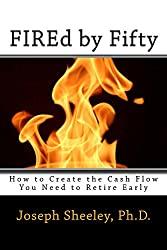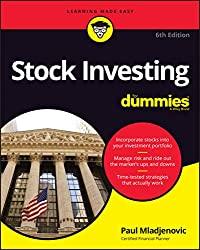
Photo by Shvets Anna on Pexels.com
" data-orig-size="1880,1253" sizes="(max-width: 723px) 100vw, 723px" data-image-title="person preparing hot air balloon" data-orig-file="https://smallivy.files.wordpress.com/2021/12/pexels-photo-2563596.jpeg" data-image-description="" data-image-meta="{"aperture":"0","credit":"","camera":"","caption":"","created_timestamp":"0","copyright":"","focal_length":"0","iso":"0","shutter_speed":"0","title":"","orientation":"0"}" data-medium-file="https://smallivy.files.wordpress.com/2021/12/pexels-photo-2563596.jpeg?w=300" data-permalink="https://smallivy.com/2022/11/08/how-to-invest-in-high-inflation/pexels-photo-2563596/" alt="" srcset="https://smallivy.files.wordpress.com/2021/12/pexels-photo-2563596.jpeg?w=723 723w, https://smallivy.files.wordpress.com/2021/12/pexels-photo-2563596.jpeg?w=1446 1446w, https://smallivy.files.wordpress.com/2021/12/pexels-photo-2563596.jpeg?w=150 150w, https://smallivy.files.wordpress.com/2021/12/pexels-photo-2563596.jpeg?w=300 300w, https://smallivy.files.wordpress.com/2021/12/pexels-photo-2563596.jpeg?w=768 768w, https://smallivy.files.wordpress.com/2021/12/pexels-photo-2563596.jpeg?w=1024 1024w" class="wp-image-21344" data-large-file="https://smallivy.files.wordpress.com/2021/12/pexels-photo-2563596.jpeg?w=723" />Photo by Shvets Anna on Pexels.comThe last time the US saw really serious inflation was back in the early 1980’s. After several years of stagflation brought on during the Carter years, prices were rising rapidly. There were tales of young women who were working in retail shops who were using their whole paychecks to buy gold and other jewelry because they saw how fast prices were rising. In that case, Fed Chairman Paul Volker raised interest rates to kill the inflationary bubble. At one point you could get a bank CD yielding more than 15%. Mortgage rates were scary at that time.
Hey – if you like The Small Investor, help keep it going. Buy a copy of the SmallIvy Book of Investing: Book1: Investing to Grow Wealthy or just click on one of the product links below, then browse and buy something you need from Amazon’s huge collection. As a member of Amazon Affiliates, The Small Investor will make a small commission each time you buy a product through one of our links.
Shop Appliances
Find a great new book
Shop DVDs
Buy your Pet Supplies
Tools and Hardware
Best Selling Toys and Games
Patio Lawn and Garden Supplies
Clothing and Accessories
Baby Products
Health and Personal Care
The Federal Reserve likes to keep inflation at around 3%. That is enough to allow for cost-of-living raises to make people feel like they’re getting more income each year (even though they really aren’t), but not so much as to effect the stock market and bank rates. It also eases the burden of paying off home loans and car loans, which helps keep people borrowing and spending. Inflation has been above 8% this year, however. While the Biden Administration first tried to say this was transitory, it has proven to be stubborn. I guess paying people trillions of dollars not to work and not to produce anything does have an effect.
Rates were really, really low for a long time but have moved up as the Fed has raised their rates. Home mortgage rates were down in the 3%’s and even in the 2%’s in some cases. Because inflation continued to plow ahead, as expected the Fed raised bank rates, causing mortgage rates to also rise. Bond yields also went up, which means bond funds came down in price.

Want all the details on using Investing to grow financially Independent? Try The SmallIvy Book of Investing.
Forget gold and crypto
Your first thought on how to protect yourself from inflation may be gold. After all, there is a limited supply, some gold is getting used up or locked away into jewelry all of the time, and it has been seen traditionally as a hedge against inflation. The issue is that the price of gold is very volatile, so the random fluctuations in price, which can be 50% or more of gold’s value, can cause you to buy in when the price is high. Even if you’re right and there is inflation, you may have paid so much for your gold that you’ll actually see the price drop. There are also substantial costs to transport and store gold. It is just not a good inflation hedge unless you need something for 100 years down the road.
Crypto currencies may look like another option. Just like gold, there is a limited supply, so if dollars become worth less, the number of dollars you could buy with crypto currency would increase. There are two big issues here. The first is that crypto is in a huge bubble, with the price of crypto in dollars growing by leaps and bounds. Eventually this will end, and when it does, the price will come way down. It is really a run-up based on the bigger idiot theory, where even when you overpay, there is someone out there willing to pay even more than you did. The issue is, you could be the biggest idiot and be holding the bag when it all comes to an end.
The other issue is that gains made in crypto are taxable, so if you’re right and your $100,000 investment in bitcoin doubles and you convert back to dollars, you’ll owe taxes on the $100,000 you made. If the dollar has lost more than half of its value by that point, you’ll just be paying taxes on inflation, so you’ll still be losing money. Vladimir Lenin said that the millstones of high taxes and inflation are what grind down the wealth of the rick folks.

Equities to the rescue
So, what can you buy that will go up in price with inflation, not have a big cost of ownership, and allow you to actually make money instead of just treading water? The answer is equities (stocks). When you buy shares of stock, you are buying ownership in a company. When inflation causes costs to rise, a company just increases their prices and passes the price increases along to the consumer. This means revenues increase, and as long as they are able to pass along the full rise in price, earnings increase. Because costs are going up and employees will start to quit and look for a better paying job if they don’t see their salaries increase, employees generally see higher pay (at least after a transition period), so everyone comes out even in the end. Assets that a company owns, like the buildings and machinery, increase in price with inflation, too. This means the book value of the company increases. All of this causes the share price to rise.
Unlike a bar of gold, the company can actually become more valuable. They can find better and more efficient ways to do things, open more locations, or branch into other product lines even when there is high inflation. One effect of high inflation is to make it easier to pay back loans, so a company may feel comfortable expanding when they are able to just keep raising prices and pay back the loans with cheap, devalued money. This means that the company becomes more valuable since they are able to earn more money even after inflation is factored in. The price of the stock will (over time) increase faster than inflation. Instead of coming out even like you would with your bar of gold or crypto coin, you’ll actually see your money grow.

Find Stock Investing Books on Amazon
Note that it is common for stocks to fall in price at the start of inflationary times. We saw just that happen this time and they will continue to fall as the Fed raises rates. This is because new investors see that the value of the dollars they have invested in the company will decline while they’re invested, so they want to make a bigger profit to make up for the losses due to inflation. If they pay a lower price, the return they’ll make if the investment works out like they expected will increase. After the initial period where stock prices adjust for inflation, prices will then start to go up. If you hold long enough, the increases in the price of your stocks should wipe out the initial drop.
Protect your longer-term assets
So, the best way to protect yourself against inflation isn’t to buy Treasure TIPS or load up your safe with gold. It is to buy stocks, just as you should be doing anyway. Really, you should put any money that you don’t need for a substantial period of time into stocks to protect yourself from inflation. Because stocks are long-term investments, where you need to invest for at least 5 to 10 years to even out all of the random fluctuations in price, they make sense only if you have a fairly long investment time horizon.
You wouldn’t want to buy shares if you need the money in a year or two. If that were the case, you would buy bank CDs, possibly buying fairly short-term CDs if inflation were causing prices and CD rates to rise rapidly so that you don’t lock you money in at a low rate. You might also consider a very short-term bond fund since then the fund would be cycling into higher-rate bonds as rates rose. Even if you were in cash, however, if you really needed the money in a year, even with 8% inflation, you’d only be out 7% or so if you were able to get 1% in a bank CD. Sometimes you need to give up a little money to be assured that the money will be there when you need it.
Have a burning investing question you’d like answered? Please send to [email protected] or leave in a comment.
Disclaimer: This blog is not meant to give financial planning or tax advice. It gives general information on investment strategy, picking stocks, and generally managing money to build wealth. It is not a solicitation to buy or sell stocks or any security. Financial planning advice should be sought from a certified financial planner, which the author is not. Tax advice should be sought from a CPA. All investments involve risk and the reader as urged to consider risks carefully and seek the advice of experts if needed before investing.
